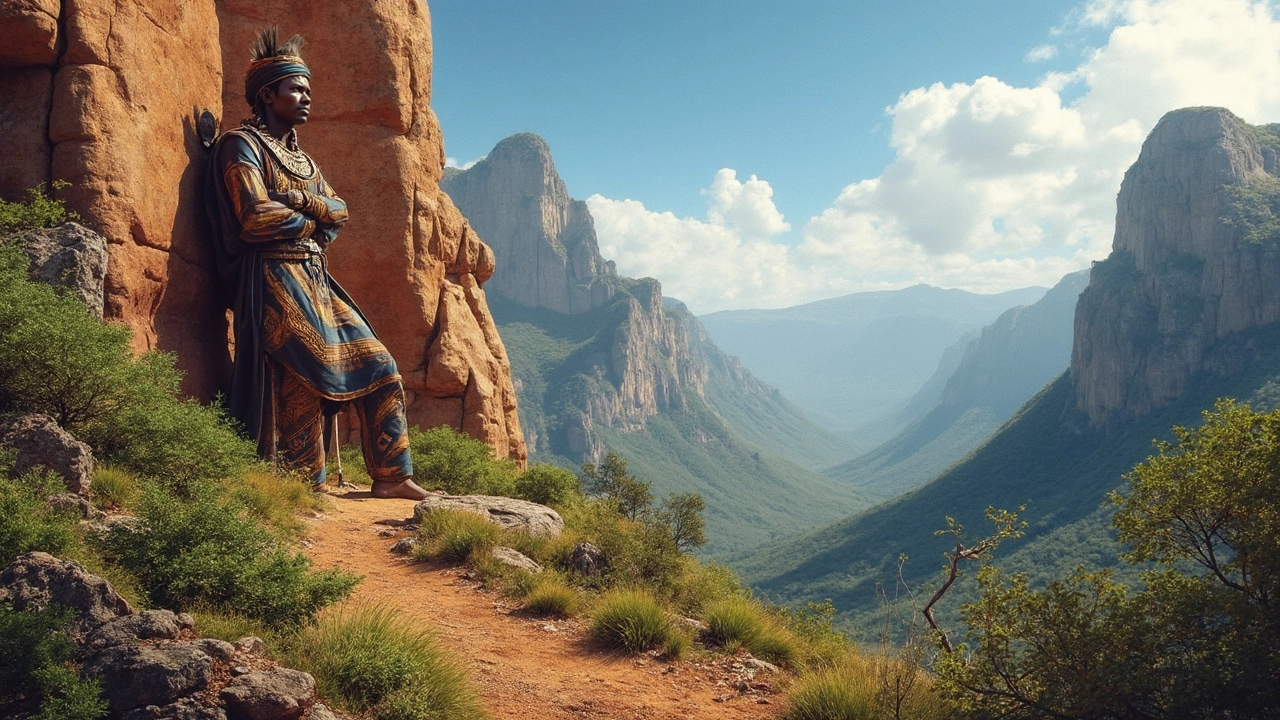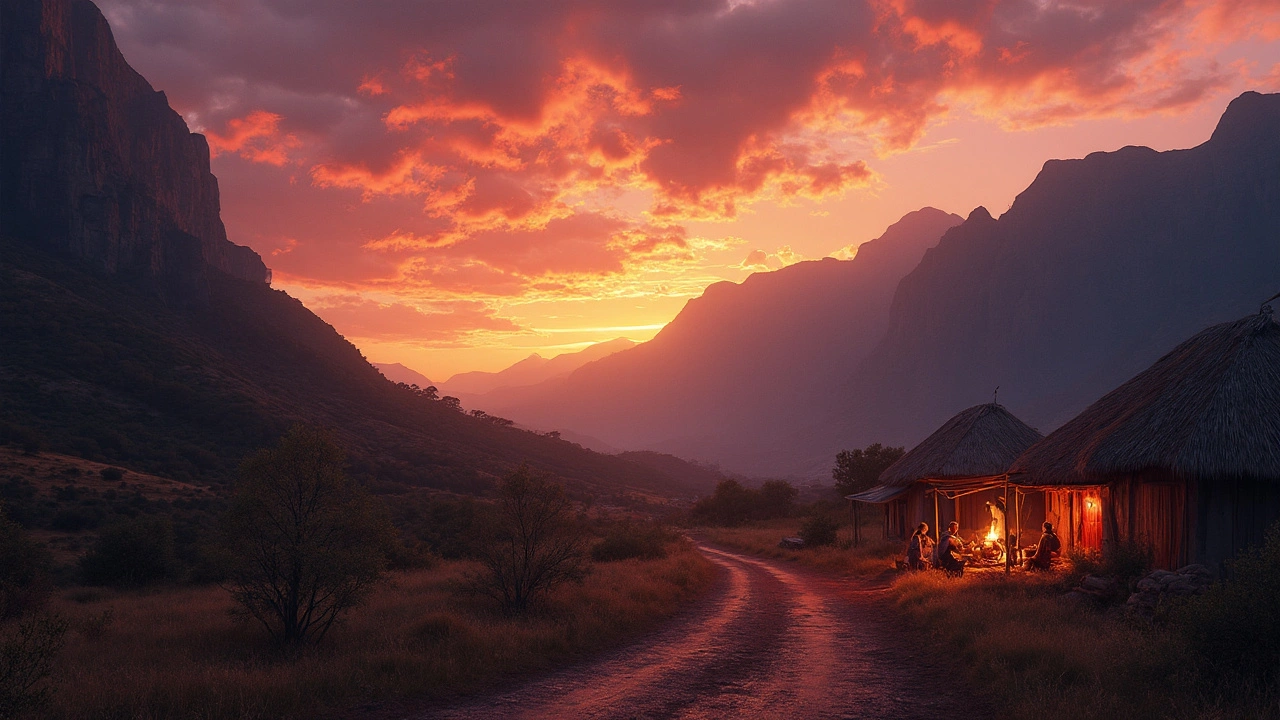Ever thought about taking a road trip from Polokwane to Lebowakgomo? Then you might want to know about Chuniespoort, a remarkable mountain pass that cuts through the picturesque Strydpoort Mountains in Limpopo Province. It's not just a pass; it's a journey filled with the whispers of history and the lure of natural beauty.
Named after the African leader *Tshwene*, Chuniespoort is more than a name on a map. It's a slice of local culture and landscape in one. Whether you're a history buff, a nature lover, or just looking to explore more of South Africa's hidden gems, this pass has something for everyone.
The drive along the R37 road offers a dose of tranquility and an escape from the hustle and bustle of everyday life. With each curve of the road, the views change, offering glimpses of the Chunies River, a vital tributary of the Olifants River. This area is like a canvas painted by nature itself—a place where every traveler can find a moment of peace and awe.
If you're planning a visit, stick around as we'll list some must-see spots, local tips, and exciting things to do when you're in the area. So buckle up and let the journey begin!
- Discovering Chuniespoort
- History and Origins
- Natural Beauty and Landscapes
- Things to Do Nearby
- Travel Tips for Visiting
Discovering Chuniespoort
Chuniespoort is like opening a door to one of Limpopo's lesser-known treasures. This mountain pass isn't just any drive-through; it's a path laden with stories and stunning vistas that make every kilometer worth it. Situated along the R37 road, it links the urban area of Polokwane with the quaint town of Lebowakgomo. Think grand mountain views, serene river scenes, and a sliver of history bundled into one scenic trail.
Location and Accessibility
Found in the heart of Limpopo Province, Chuniespoort offers easy accessibility, highlighting its importance as a travel connector in the region. It's not just a route but a way to discover both natural and cultural landscapes. With coordinates at 24°13′45″S 29°29′48″E, the pass is well-positioned for a leisurely drive or a photographic adventure.
Geographical Highlights
Travelers will appreciate the blend of natural features, such as the Chunies River—a vital arm of the Olifants River. The river often plays host to various bird species, making it a delightful spot for budding birdwatchers. As you navigate through the Strydpoort Mountains, the rugged terrain and lush greenery create a breathtaking backdrop.
A Glimpse into History
The name 'Chuniespoort' honors the legacy of *Tshwene*, an acclaimed African leader. It's this historic touch that adds an extra layer of meaning to the scenery. This pass is more than just a roadway; it’s a chapter of history, open for all to see.
| Feature | Detail |
|---|---|
| Location | R37 road, between Polokwane and Lebowakgomo |
| River | Chunies River, tributary of the Olifants River |
Must-Know Tips for Travelers
- Start your journey early to avoid traffic and catch the morning light, which makes the mountains even more breathtaking.
- Remember to pack your camera; you'll encounter numerous photo opportunities along the way.
- If you're traveling during rainy season, check road conditions in advance, as the mountainous terrain may become challenging.
So, if you're ever wandering through South Africa and find yourself near Chuniespoort, take a detour. It's a journey you won't regret, filled with both surprises and serene beauty.
History and Origins
The story of Chuniespoort is as winding as the pass itself. It gets its unique name from a native leader known in the Northern Sotho language as *Tshwene*. His legacy lives on, echoing through the hills and valleys of the Limpopo landscape.
Chuniespoort has been a crucial passageway for centuries, bridging communities from Polokwane to Lebowakgomo. Its strategic position has made it a vital link, not just for trade, but also for cultural exchange. Long before modern roads appeared, it served as a natural corridor for indigenous peoples and later, explorers venturing through Southern Africa.
Colonial and Modern Development
During the colonial era, this passage saw a wave of new settlers who began to document and map the region. It was incorporated into infrastructure plans for the burgeoning nation. The R37 road, which now runs through Chuniespoort, was laid to harness its natural advantages and has maintained its role as a buzzing artery of travel in the area.
The geology of Limpopo is fascinating on its own, with the Strydpoort Mountains featuring prominently in various ecological and geological studies. This makes it not just historically important, but also a point of interest for scientific communities studying the diverse rock formations and biodiversity that the area supports.
For travelers eager to dig deeper, historical landmarks and local narratives offer a glimpse into the past. Consider stopping by nearby villages for oral histories or checking out local exhibitions detailing the roots and cultural significance of Chuniespoort.
Legacy and Cultural Significance
Even today, the pass holds a place of reverence for local communities, serving as a testament to their history and resilience. It's more than just a drive—it's a passage through time, providing insights into the cultural tapestry of the region.
So, when you visit, know that you're not just traversing a mountain pass; you're partaking in a journey that millions before you have made, each step echoing with tales waiting to be uncovered.

Natural Beauty and Landscapes
If you’re a sucker for stunning vistas and landscapes that look like they’ve been plucked from a postcard, then you’ve got to check out Chuniespoort. This mountain pass in Limpopo province is one of those breathtaking spots that’s a little off the beaten path but totally worth the drive.
Chuniespoort winds through the R37 road, and as you make your way through, you'll find yourself surrounded by the Strydpoort Mountains. It's nature’s skyscrapers at their finest, with peaks that kiss the sky and valleys where the quiet hum of Chunies River sets the mood.
The Chunies River
This river isn't just a name on a map; it's a lifeline for the local ecosystem and a key contributor to the Olifants River. Its waters are home to a variety of local wildlife and plants, offering a little splash of life in this rugged part of the country. Whether you're stopping by for a quick photo op or a longer hike, the river has this calming effect that’s hard to put into words.
Flora and Fauna
The region is home to a unique mix of flora and fauna. You’ll find indigenous plants, some of which only blossom in this area. Keep your eyes peeled for some neat wildlife, from the swift movements of local bird species to the occasional glance at small mammals enjoying the shade of the trees.
Adventurer's Welcome
For those in search of adventure, hiking trails nearby offer a chance to experience the landscapes up close. Just you versus nature! Whether you’re a seasoned hiker or a weekend warrior, there’s a trail that's just right for you.
For quick reference, here's a table highlighting some key features of the area:
| Feature | Details |
|---|---|
| Mountains | Strydpoort Mountains |
| Rivers | Chunies River, Olifants River |
| Location | Coordinates 24°13′45″S 29°29′48″E |
Take your time here, explore the sights, and let the natural world remind you just how beautiful simplicity can be.
Things to Do Nearby
Once you've taken in the stunning views at Chuniespoort, you'll be itching to discover more of what the Limpopo Province has to offer. There’s no shortage of exciting activities around here that cater to all sorts of travelers. Whether you’re a history enthusiast or an adventure seeker, you’ll find plenty of things to do.
Visit the Polokwane Art Museum
If you're heading towards Polokwane, carve out some time to stop by the Polokwane Art Museum. It’s a fantastic place to soak up some local culture and appreciate South African art. The museum hosts a diverse range of artworks reflecting the rich cultural heritage of the region.
Hiking in the Wolkberg Wilderness Area
Fancy a hiking adventure? Head to the Wolkberg Wilderness Area. This reserve is home to some of the most breathtaking hiking trails in Limpopo. Go on a day hike and explore the rugged terrain, waterfalls, and lush vegetation. It's the perfect way to get immersed in nature and enjoy the brilliant landscapes—don’t forget your camera!
Pedi Living Culture Village
For a taste of history and tradition, the Pedi Living Culture Village offers a unique look into the traditional life of the Pedi people. Participate in cultural exchanges, learn about local customs, and even enjoy traditional dance performances. It’s an experience that brings you closer to South Africa’s cultural roots.
Local Markets and Crafts
Take some time to explore local markets around the Chuniespoort area. These markets are treasure troves filled with local crafts, fresh produce, and handmade goods. A great spot to pick up souvenirs or simply enjoy the vibrant atmosphere.
Lebowakgomo Shopping Complex
If you find yourself near Lebowakgomo, a visit to the local shopping complex can be quite fulfilling. Whether you’re on the lookout for some retail therapy or just a great place to grab a bite, this complex has a good variety of shops and eateries.
By exploring these sites and experiences, you can make your trip around Chuniespoort unforgettable. Remember to take along a sense of adventure and a willingness to immerse yourself in the local culture and stunning natural beauty!

Travel Tips for Visiting
So, you’re thinking about hitting the road to Chuniespoort? Good call! It's a fantastic drive, but like any trip, it's wise to plan ahead. Here are some handy tips to keep your journey smooth and safe.
Best Time to Visit
The best times to make the trip are in spring or late summer. You’ll avoid the extreme heat and still catch the greenery in full swing. Plus, the crowds are thinner, giving you the road—and the views—mostly to yourself.
Road Conditions
The R37 road is in generally good condition, but always check local travel advisories for any construction or weather-related closures. Remember, safety first! Keep an eye out for sharp turns and the occasional wandering wildlife.
Pit Stops and Essentials
- Gas stations: Make sure to refuel in Polokwane or Lebowakgomo as options are limited on the pass.
- Snacks and drinks: Pack a cooler with water and snacks. Hydration is key, especially during warmer months.
- Bring a camera: Trust me, you’re going to want to capture those views.
Local Attractions
If time allows, consider exploring nearby attractions. The Polokwane Game Reserve is a short drive away and provides a great spot for a day trip filled with wildlife sightings.
Weather and Clothing
The weather can change quickly in the mountains, so dress in layers. A good jacket and comfortable shoes are your best friends out there.
| Month | Average Temperature (°C) | Tourist Crowds |
|---|---|---|
| March to May | 15-25 | Low to Medium |
| September to November | 20-30 | Low |
Following these simple tips can take your Chuniespoort adventure from good to great—and ensure you're prepared for anything the journey throws your way!










Write a comment